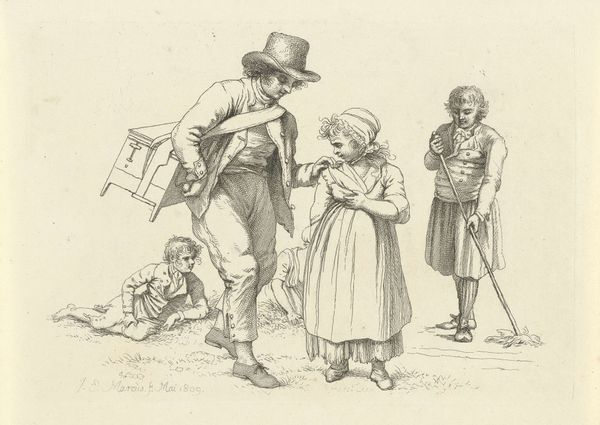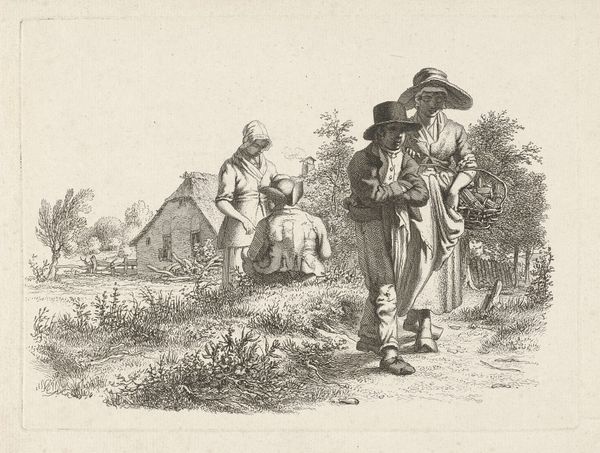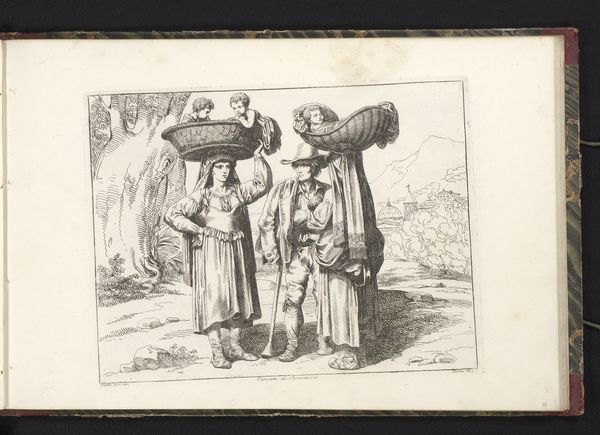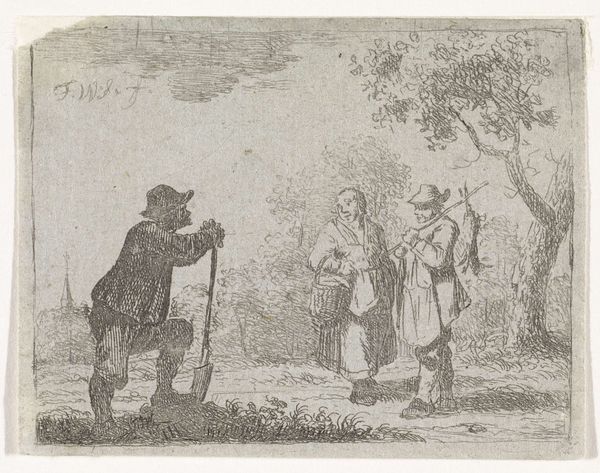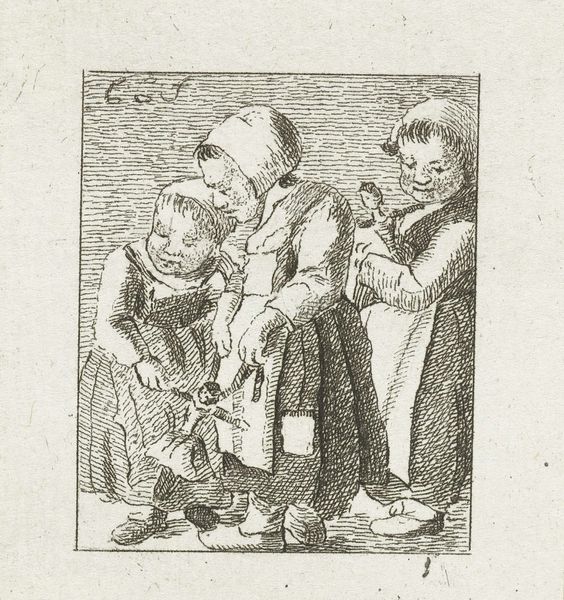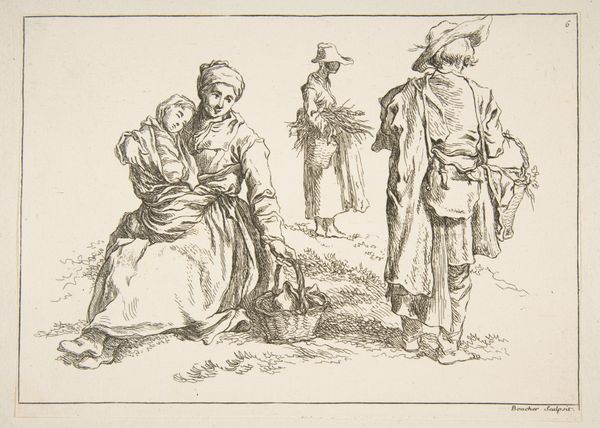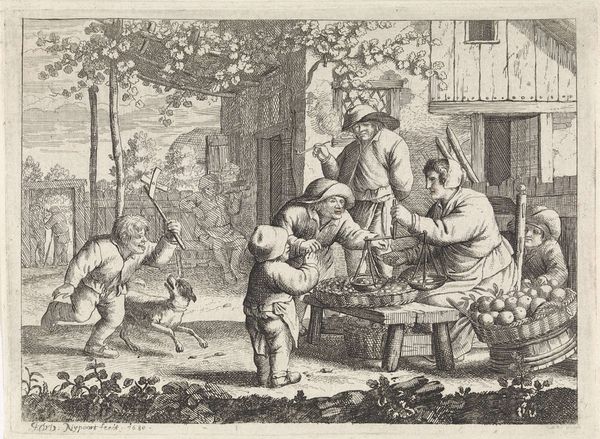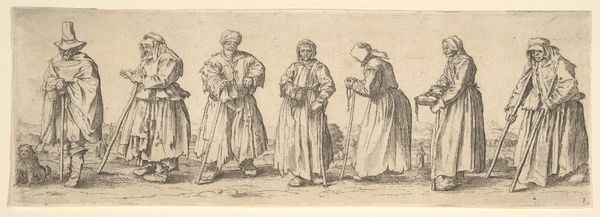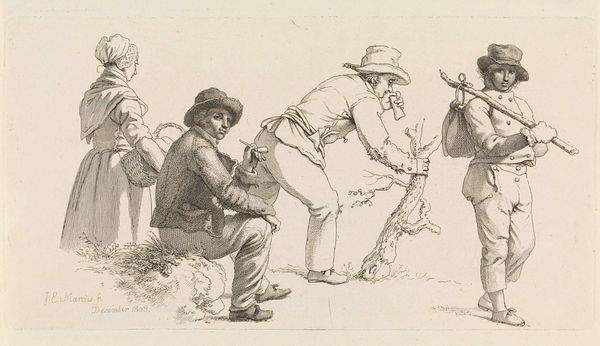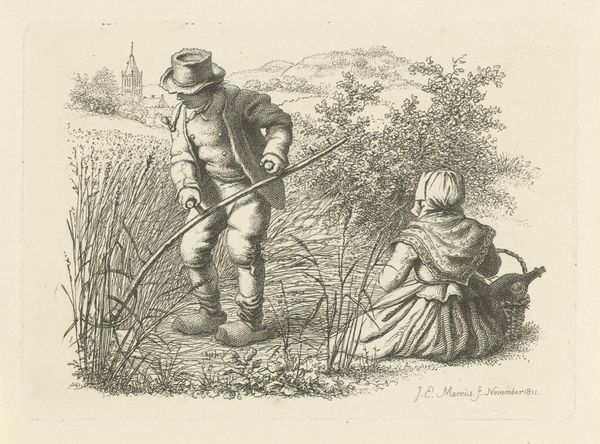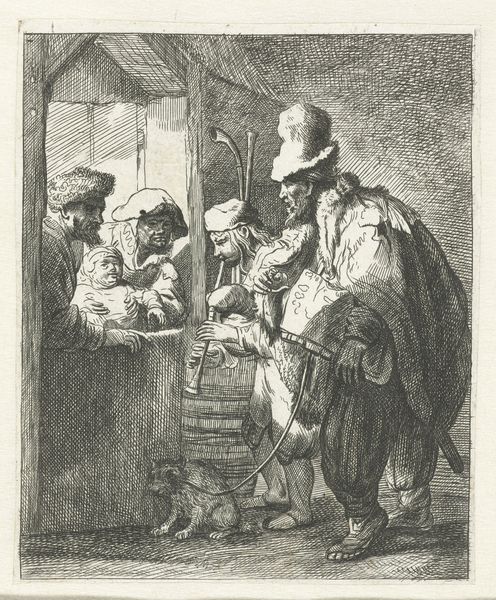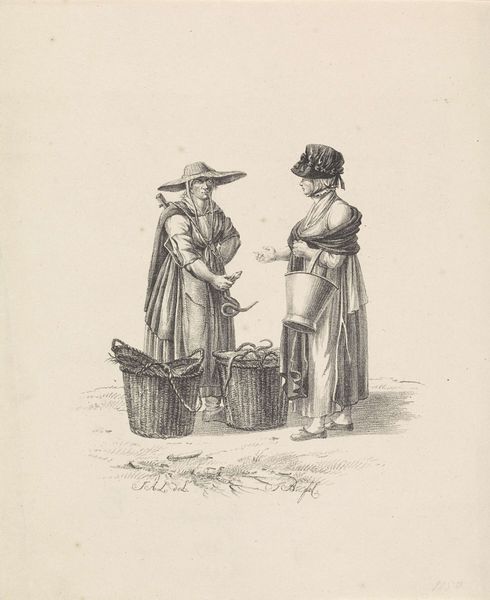
drawing, pencil
#
portrait
#
drawing
#
neoclacissism
#
pencil sketch
#
landscape
#
pen-ink sketch
#
pencil
#
genre-painting
Dimensions: height 159 mm, width 244 mm
Copyright: Rijks Museum: Open Domain
Curator: This is "Studieblad met militairen en een boerenmeisje" created in 1814 by Jacob Ernst Marcus, currently residing at the Rijksmuseum. It is crafted using pencil. Editor: It’s interesting to see this genre scene captured in a simple pencil drawing. The interaction between the soldiers and the peasant girl seems so ordinary. How can we think about this from a materialist perspective? Curator: Good question. Let's focus on the materials first. Notice the directness of pencil on paper, a medium readily available. What does that tell you about the production and dissemination of imagery during this period, especially regarding military life and its intersection with rural labor? Editor: It makes me think about accessibility. Pencil drawings could be reproduced more easily than, say, oil paintings, enabling wider circulation and potential propaganda use, perhaps idealizing the interaction between soldiers and civilians? Curator: Exactly. Think about the labor involved in both the making of the drawing and the lives it depicts. The peasant girl's labor is visible through her basket of goods. And the soldiers? Editor: Their labor is implied through their uniforms and gear. The materials of war, so to speak. Could the contrast in their attire suggest something about the socio-economic disparity of the period? Curator: It could certainly highlight the stark contrasts present. Now, consider who this drawing was *for*. Who had access to art in 1814, and how might that influence its message or even the materials it was made with? Editor: So it's not just about the pencil and paper, but the whole system that allows for its creation, distribution, and consumption! Thanks. It helps connect the dots and adds complexity. Curator: Precisely. Understanding those production chains reveals the art's place within a wider historical framework, highlighting how materials and labor shape our understanding of art and society.
Comments
No comments
Be the first to comment and join the conversation on the ultimate creative platform.
